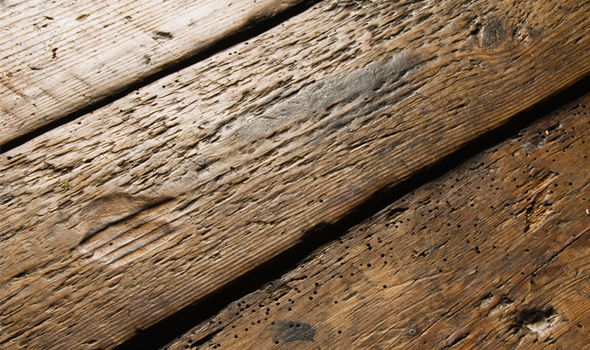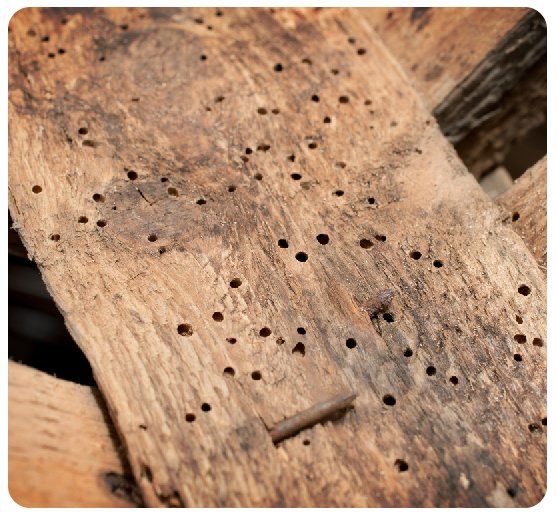When it comes to dealing with woodworm it can be a tricky task, especially if not caught early on. What makes it more difficult is that most people do not know a lot about woodworm or how to pick up on early signs. Here we look into what woodworm is and woodworm treatment to help deal with this problem effectively.
What are Woodworms?
Woodworm is the generic name given to wood-eating grubs and larvae of many species of beetle. These larvae and grubs use wood as a food source and as a place to lay eggs once they have matured. It is thought that woodworm prefer wood with a high moisture content so in theory, damp wood is their primary source.
How do I know if I have Woodworms?
These small insects will leave noticeable small holes appearing in the surface of the wood which vary from 1mm to 2.5mm. It is a common misconception to believe that these small holes are a sign of the woodworm leaving, however, this is not the case. It is likely that the woodworm has left their offspring within the wood. The best way to tell if you have an active infestation is to look out for any droppings. This will look like fine sawdust and will usually be apparent around the holes in the infected wood.

Woodworm Treatment
If you have a woodworm infestation then the only way to remove it is by hiring a professional pest control service that is experienced in using the correct chemical insecticides needed. It is suggested to investigate any damp in your home as dry wood is not usually affected. If you do have damp then that requires another service to ensure there is no reinfection at a later date. There are plenty of companies in Scotland that can provide woodworm treatment, however it is beneficial to go with a reputable company that knows how to effectively deal with this problem.
Woodworm Prevention
The first step to any pest control is Inspection. Woodworm only attack seasoned sapwood timber not fresh or live wood and also avoid heartwood timbers. Which is why you may find that certain parts of your wood are infested whilst other areas are left untouched. As woodworm prefer damp wood it is crucial to monitor the levels of moisture and damp before and after an outbreak. A good way of measuring this is investing in a timber moisture meter. If there are any readings above 18% it indicates that your wood could be risk of decay and woodworm infestation.




